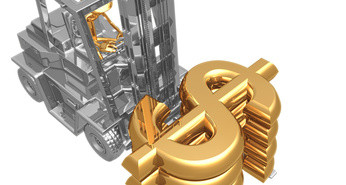German industrial output rose by 0.7%, marginally exceeding expectations of a 0.6% rise. The Euro-zone’s powerhouse managed to correct the bad impression left from yesterday’s factory orders. The  falling Euro is slightly better  positioned towards the upcoming Non-Farm Payrolls.
EUR/USD now trades at 1.4545, slightly higher than the lows under support of 1.4520 seen earlier in the day. Last month’s rise was marginally revised to the upside – from a rise of 1.6% to 1.7%. This is the third consecutive monthly rise.
Yesterday, German factory orders were a bitter disappointment – they plunged by 4% when a rise was expected. The Euro took a hit from these bad news, and when Trichet began his dovish press conference, the Euro was better prepared for the dive.
Trichet hinted no rate hike in June, but probably in July, and spent a lot of time urging for a strong dollar. EUR/USD reacted with a 300+ fall, together with a broad rise of the dollar and a collapse of commodity prices.
Many blame the ECB to be leaning towards Germany. A slowing Germany can push the rate hike to an unknown tiing later in the year, but this small rise might keep the schedule on track.
EUR/USD is still within the 1.4520 – 1.4580 range. Levels above are 1.4650 and 1.47. Below we find 1.4450 and 1.4375. For more levels and technical analysis see the EUR/USD Forecast.
Trading is currently very tense, as the Non-Farm Payrolls are awaited with high anticipation. It’s important to note that while a weak figure may hurt the dollar across the board, a terribly low figure may trigger risk aversion.
As seen earlier this week with the ISM Non-Manufacturing PMI, a horrible US result can split currencies between appreciating safe haven currencies (Swiss franc and yen) and between depreciating currencies such as the Euro, pound and Aussie.
See the NFP Preview for more on this big event.



